My American History Tour: Lexington-Concord, King’s Chapel Cemetery, and Inside of South Meeting House and State House
What a great day to end a trip to the northeast.

Friday/Saturday morning is our last day in Boston.
Friday was a mixed bag. The Tea Party Museum had no tickets for a public tour due to so many private tours. That plan got axed and we’ll go on Saturday. After the Tea Party Museum, we venture back to Oklahoma. The first stop is Saratoga!
But on Friday we chose to go to Lexington-Concord in the morning followed by the King’s Chapel Cemetery and the inside tours of the Old South Meeting House and Old State House.
Lexington-Concord
The battles of Lexington-Concord started the Revolutionary War on April 19, 1775. It’s the home of the shot heard around the world.
The Redcoats started marching to Concord from Boston to pick up ammunition. Paul Revere and others rode ahead of the Redcoats to warn the colonists THE REDCOATS ARE COMING!
The Redcoats didn’t expect a bunch of farmers to come out fighting.
Minute Man National Historical Park is a huge national park, which is no surprise. But a hot day meant not a lot of walking, so I didn’t go to every spot of the 20 spots on the auto self-guided tour.
The driving tour of the battle road should last 3-5 hours.
The first stop is the Nathan Meriam House. It is the spot where the militia opened fire on the Redcoats as they retreated to Boston. The house is the beginning of what is known as Battle Road.
Nathan and his wife Abigail lived at the house with seven children. The family oral tradition about the day says (and it has hints of the 3rd Amendment): “when the alarm was given in Concord that the British soldiers were coming, Josiah Meriam, with his sons, Josiah, Jr., and Timothy, went to the village, and later were among the forces at the North Bridge, and probably crossed the meadows and appeared again at the encounter near the house. Joseph, Josiah’s youngest son, then seven years old, remained at home, as he always said, ‘to take care of the women’ and soon went with them to a place of refuge behind the hill. The British soldiers entered the house, helped themselves to whatever breakfast they could find, taking the unbaked pies from the oven…”
There is also a gravestone marking the burial of Redcoats killed on the lawn.
Next we saw Samuel Brooks’s house, built in 1692. He lived at the house with his mother. Overall the land consisted of about 60 acres, which is quite large for farms at the time. The family raised livestock and a garden including corn, barley, and rye.
The records are incomplete, but the NPS believes Samuel and his neighbors took up arms to fight the Redcoats on April 19.
I wish the park had some decent signs but it’s on a major road. I kept missing the turn-in for the Job Brooks House.
The next five stops required too much walking. I am with my mother and she cannot walk that well. Plus, I have rheumatoid arthritis and my feet hurt a lot today. I parked the car and only went to one spot.
The five stops: Elm Brook Hill, British Grave Near Bloody Angle, Hartwell Tavern, Samuel Hartwell House, and Captain William Smith House.
I went to the Hartwell Tavern.
The Hartwell family owned the tavern, which became a popular spot in the area. The Redcoats captured Paul Revere down the road. Rider Dr. Samuel Prescott escaped the Redcoats, jumped the barrier, and went to the tavern to warn the family about the Redcoats.
Three of the Hartwell sons answered the call and fought the next morning.
A Hartwell daughter-in-law talked about how the Redcoats passed through the area later in the morning on April 19. The Hartwell family escaped to a safer location.
I didn’t see the Grave of a British Soldier near Folly Pond.
I stopped at the Paul Revere capture site! Paul Revere’s midnight run ended at this site when the Redcoats captured him. William Dawes and Dr. Samuel Prescott escaped.
Revere was not by himself as I just stated. The militia also had a set of couriers to keep getting the word out when the Redcoats approached at any time.
We drove past another British grave. We also drove by Parker’s Revenge, which is an area where the militia and Redcoats engaged in another intense battle. Too much walking.
The Bloody Bluff has a long history that goes to the beginning of time. The geological makeup of this area helped the militia beat the Redcoats. I love this:
Rev. Edmund Foster with the Reading militia near the Tavern recalled,
“a man rode up on horse back unarmed. The enemy were then passing round the hill just below the tavern. They had posted a small body of their troops on the north side of the hill, which fired upon us. The horse and his rider fell instantly to the ground; the horse died immediately, but the man received no injury. We were quick at the spot, from which we returned the fire.”
Dramatically outnumbered and flanked the British detachment atop the bluff withdrew. As the regulars descended the rocky hillside into the low area behind, more colonial militia hidden behind trees, rocks and fence rails on Fiske Hill opened fire. Desperately attempting to protect the column and cover the retreat, a mounted British officer galloped to the front. Edmund Foster continued,
“An officer, mounted on an elegant horse, and with drawn sword in his hand, was riding backwards and forwards, commanding and urging on the British troops. A number of Americans behind a pile of rails, raised their guns and fired with deadly effect. The officer fell, and the horse took fright, leaped the wall, and ran directly towards those who had killed his rider. The enemy discharged their musketry in that direction, but their fire took no effect.”
The last three spots are Fiske Hill, British Grave on Fiske Hill, and Ebenezer Fiske House Site.
The battle grew near to the Fiske house. Benjamin Fiske and his wife Rebecca loaded his ill father Ebenezer into a cart and rolled away to a safer spot. The battle ensued in the open field, covered with dead militiamen and Redcoats.
A tale says militiaman James Hayward found himself in front of a Brit exiting the abandoned Fiske house. The Brit said, “You’re a dead man.” Hayward said, “And so are you.”
Hayward killed the Brit. The Brit mortally wounded Hayward.
Rebecca came home and found a dead Redcoat on her front step. Three soldiers were in a pool of blood inside her house.
Unfortunately the Fiske house no longer exists.
King’s Chapel Cemetery
I decided to explore a few places on the Freedom Trail. On the tour, I did not go into the King’s Chapel Cemetery, Old South Meeting House, and the Old State House.
You can read about the history of those places in my previous post.
The King’s Chapel Cemetery is older than the Granary Cemetery. It houses the famous Tudor family. No, not THAT Tudor family. We have Frederic Tudor known as the “Ice King.” No, not that Ice King. He founded the Tudor Ice Company and shipped New England pond ice around the world.
Old South Meeting House
Again you can read the history of the Old South Meeting House in my previous post. I went inside today. SO COOL to stand where our Founders stood and made the decision to become independent from tyranny.
The Sons of Liberty left this room, marched to the harbor, and threw the tea overboard. LOVE IT.
Old State House
Where did we go wrong in this country? The headline: New Taxes Provoke Violence. Now no one blinks an eye at a new tax. But inside this building, they read aloud the Declaration of Independence for the first time on July 18, 1776.
Fascinating building. The Boston Massacre also took place out front. An exhibit has some of the tea from the Tea Party.
What a spectacular week in the northeast! So much American history and a great time with friends.
I cannot wait to come back!
But on the way to Oklahoma, we will hit Saratoga, Gettysburg, Antietam, and Chattanooga.
 DONATE
DONATE
Donations tax deductible
to the full extent allowed by law.


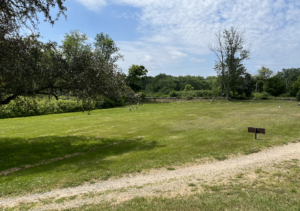

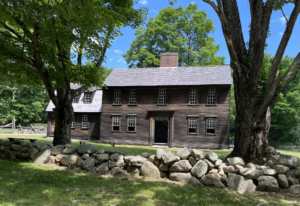
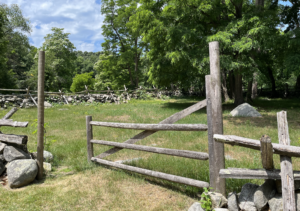
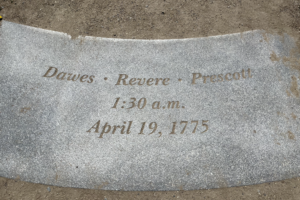
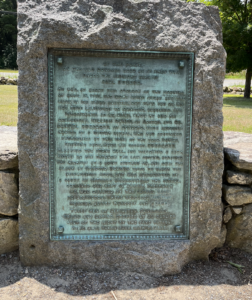
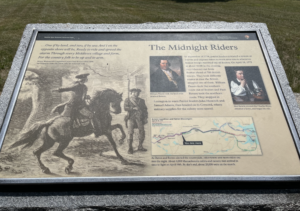
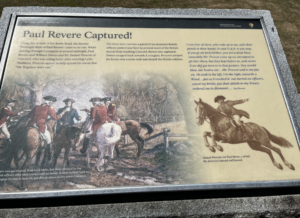
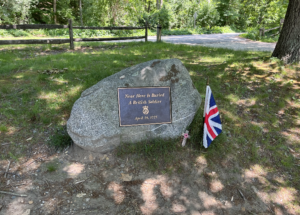
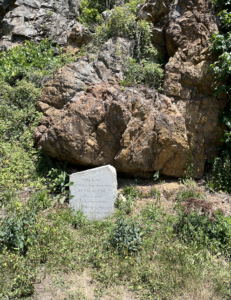
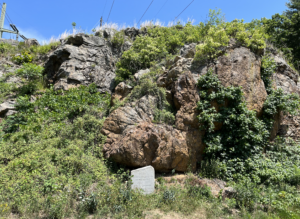
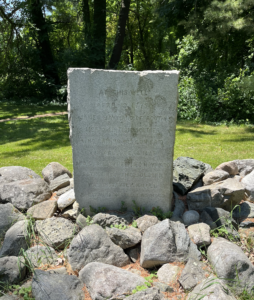
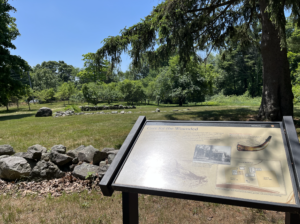
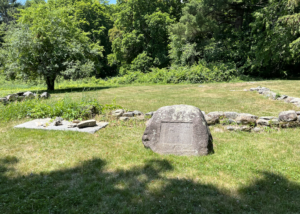
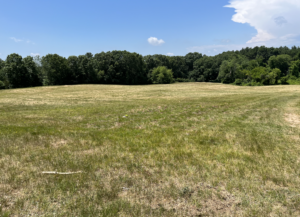
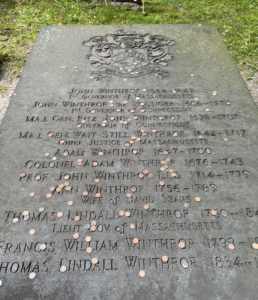


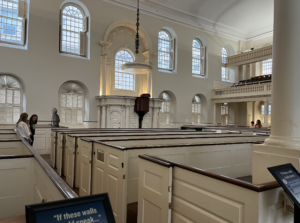
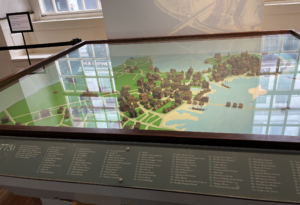
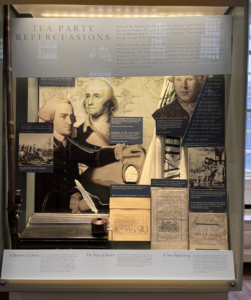

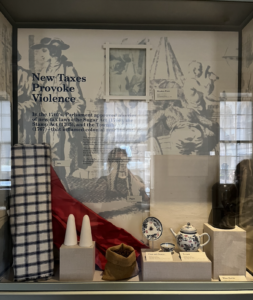
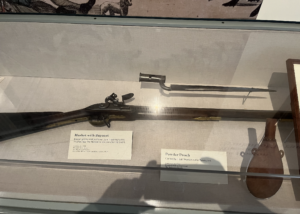
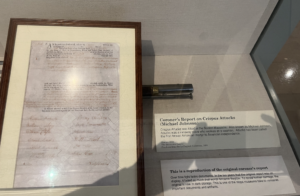

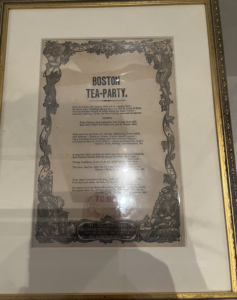

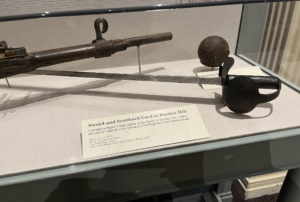
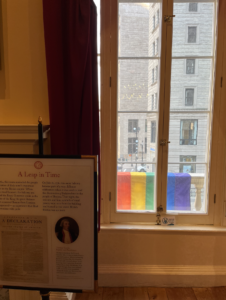








Comments
I once spent an afternoon exploring through the Massachusetts Historical Society bookstore and found two books, one containing the depositions of the men involved in the April 19 Battle of Lexington Green and another containing depositions of the British soldiers who returned to Cambridge afterwards. Two observations:
On the first book, it struck me that the testimony of the colonists was all virtually the same, almost word for word. So they were prepped by legal counsel. That is probably why it was impossible to determine who fired the first shot.
On the second book, it was astonishing to read the words of British officers describing what they had just faced. Most notable was one line officer, a lieutenant who stated “If you think these colonists are just farmers who will flee at the first glint of brass, well they not only fight but are damn good at it!”.
The British were trained to fight set piece battles in open fields and so had no answer for the series of skirmishes where colonists would attack them from behind trees and rocks with riflemen taking out line officers, drummers and buglers from 200-250 yards away. “The colonists do not fight like gentlemen!” The mounted lancers were useless in the forest having to dodge trees and rocks and was the artillery which had no time to set up to zero in on moving targets. Home field advantage. The riflemen were particularly effective.
It is interesting to read about the Revolutionary War, and War of 1812 from the point of view of the British and Canadians. Whereas our histories don’t point out how effective our riflemen were, they obsess about how that is not how gentlemen fight wars. Yeah, the civilized way is to form lines in an open field and shoot each others heads off from 30 yards!
We got lucky in many ways in those wars but you have to be good to be lucky. The colonists were fighters who had to learn on the go and caught smug and cocky Brits with their pants down over and over again.
I am always struck by the expectation that poor (and often pressed) men were expected to line up and shoot other poor people.
Of course, a fair few officers were killed doing that in the Napoleonic Wars, so maybe I am being unfair.
That picture with the gay flag says about all
You need as to what has gone wrong with this Country
It’s everywhere
We don’t celebrate the nuclear family, the center of our once great country
We celebrate every other imaginable or unimaginable group, many anti American in nature
Here is a quick history of Daniel Morgan who was instructed by George Washington to form an elite light infantry unit known famously as “Morgan’s Riflemen”.
https://en.wikipedia.org/wiki/Morgan's_Riflemen
Morgan’s Riflemen played pivotal roles in many key battles and were always a thorn in the side of British troops on the move. His biggest victory was the epic Battle of Cowpens in 1781.
I don’t know why so many people find the history of the Revolutionary War boring.
Gettysburg – depending on your path to Gettysburg, you may go through Lancaster and York, PA. Lancaster is special for a variety of reasons – one being the Amish. The primary road between the two cities is 30. Just south of the bridge over the Susquehanna river is the “old” casements from an earlier bridge. The Confederates were marching on Philadelphia, when the Union troops and others burned the bridge. This caused the Confederates to turn, ultimately to Gettysburg.